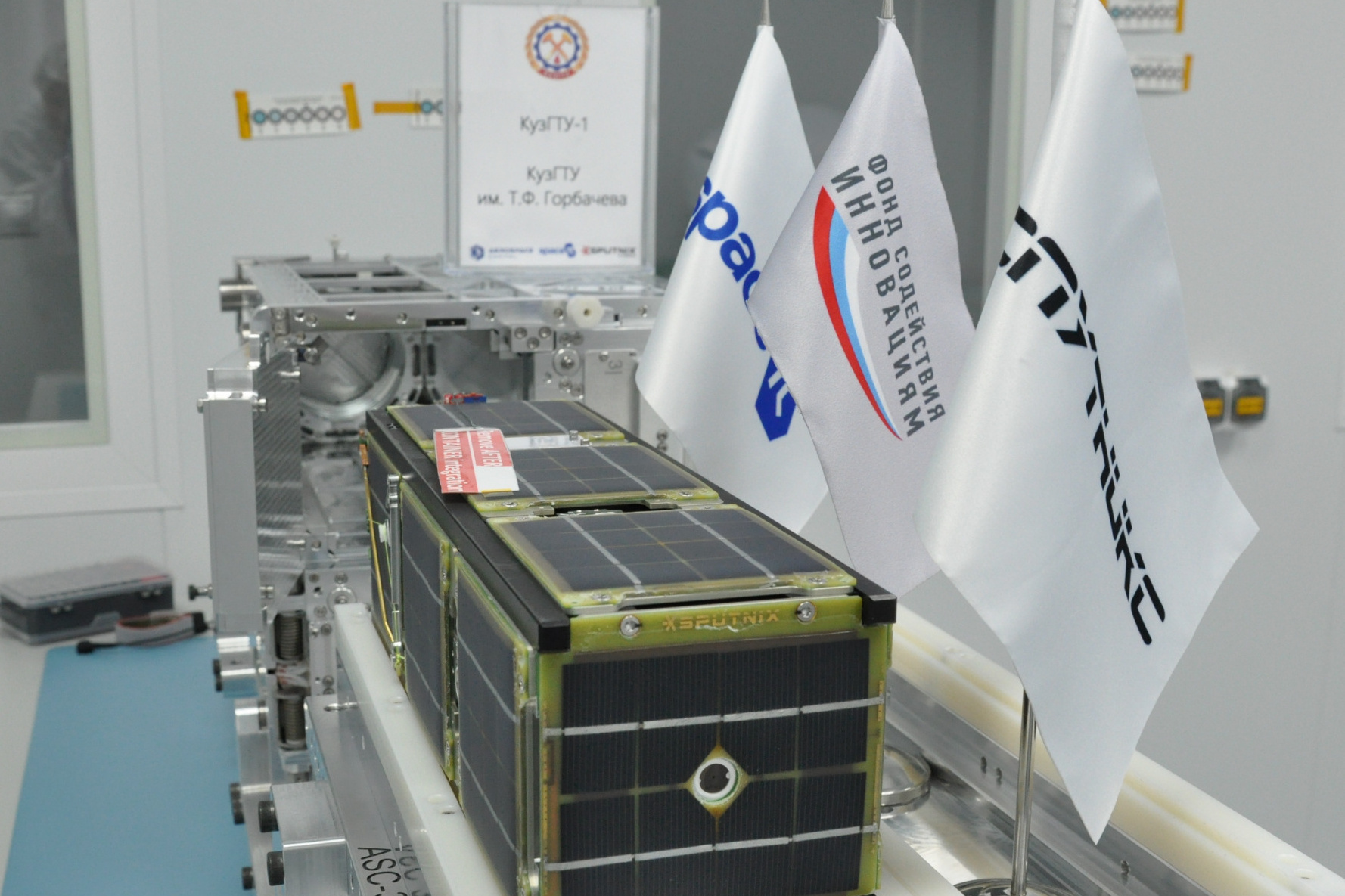
- Kuzbass
- University
- Education
- Science and Innovation
- Life at KuzSTU
- Kuzbass-300 Satellite

On June 27, 2023, T.F. Gorbachev Kuzbass State Technical University launched the second satellite - nano-satellite "KuzSTU-1". The record launch, made from the Vostochny Cosmodrome, has gone down in the history of Russian cosmonautics. "KuzSTU-1" (call sign RS47S) and 39 other Russian satellites simultaneously reached the target orbit, after which they separated from the upper stage "Fregat" launched by the launch vehicle "Soyuz-2.1b".
As part of the project on multilevel dynamic modeling (MDM) using the KuzSTU-1 satellite, scientists study loads on orbital stations. Inside the satellite is an experimental scientific setup for determining the effects of mechanical vibrations in weightlessness. By remotely changing the stress state of the mechanical structure, switching on and off controlled vibration sources and changing the vibration along three axes of the Cartesian coordinate system, scientists will be able to identify those conditions that affect the service life and quality of the spacecraft. For example, to determine the dynamic loads of space orbital stations under weightlessness conditions due to equipment operation, human movement, impacts during docking and undocking of spacecraft and operation of onboard equipment. These loads affect spacecraft durability.
The nanosatellite "KuzSTU-1" has fulfilled its main functional task, - says Vasily Fedorov, Director of the Institute of Information Technologies, Mechanical Engineering and Motor Transport, Head of the Scientific Innovation Center of Space Technologies of KuzSTU. - We have taken all its characteristics in different modes. Now the collected data on vibration phenomena, vibrations are processed and analyzed. Then a digital mathematical model will be built, which in the future will be used in the design of the hulls of satellite vehicles or orbital stations. Simply put, this research will help build stronger and more durable spacecraft bodies.